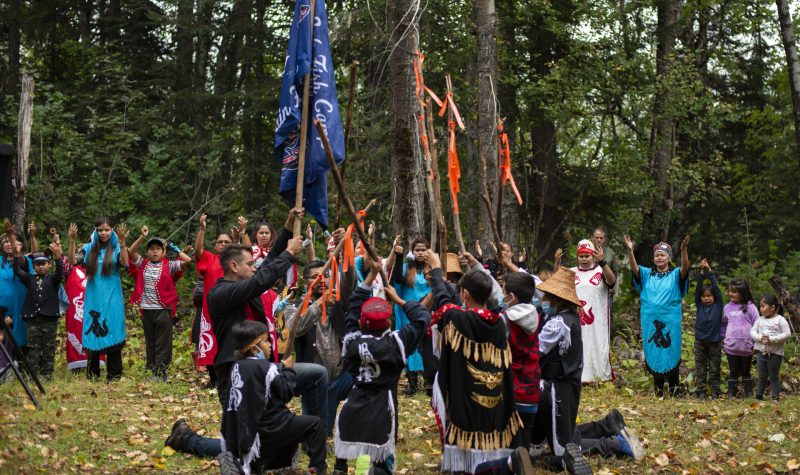On August 28, 2021 at Lax an Zok (Meziadin Falls/River) Wilp Wii Litsxw announced the establishment of the Wilp Wii Litsxw Meziadin Indigenous Protected Area at an outdoor event including approximately 200 guests. Supported by the other 7 Gitanyow Wilps (House Groups), and witnessed by neighbouring Gitksan, Wet’suwet’en, Tsimshian, and Nisga’a peoples, Wilp Wii Litsxw Simoogits (Chief and Wing Chiefs) and Sigidm’hanak (Matriarchs) signed the Declaration of the Wilp Wii Litsxw Meziadin Indigenous Protected Area. Guests were fed salmon selectively harvested from
the Meziadin River by Wilp Wii Litsxw, and enjoyed a performance by the Gitwangak/Gitanyow song and dance group, and viewed the world premiere of the documentary film Ha Nii Tokxw: Our Food Table by VoVo Productions.
“We have affirmed in our Ayookxw (laws) that the entire Meziadin watershed is protected from mining and mineral exploration, railway and other major industrial development,” said Simoogit Wii Litsxw, Gregory Rush Sr. “Salmon is central to our culture and is an indicator of ecosystem health and function, we take this important step to let government, industry and the general public know that this area must be cared for by the original stewards of this land – Wilp Wii Litsxw and the Gitanyow.”
In 2012, the Hanna Tintina Conservancy was protected through the Gitanyow Lax’yip Land Use Plan, and protected 24,000 hectares of land around Hanna and Tintina Creeks which are critical habitat for Nass River sockeye. However, in 2016 Gitanyow Fisheries Authority learned of a larger abundance of spawning salmon in nearby Strohn Creek, which was not included in the Conservancy. Due to climate change and increased glacial melt, Strohn Creek has become more suitable habitat for salmon spawning, but is also affected by new mineral claims by companies seeking to capitalize on newly
exposed areas for drilling.
Listen to the speakers at the August 28 event: Glen Williams and Tara Marsden


